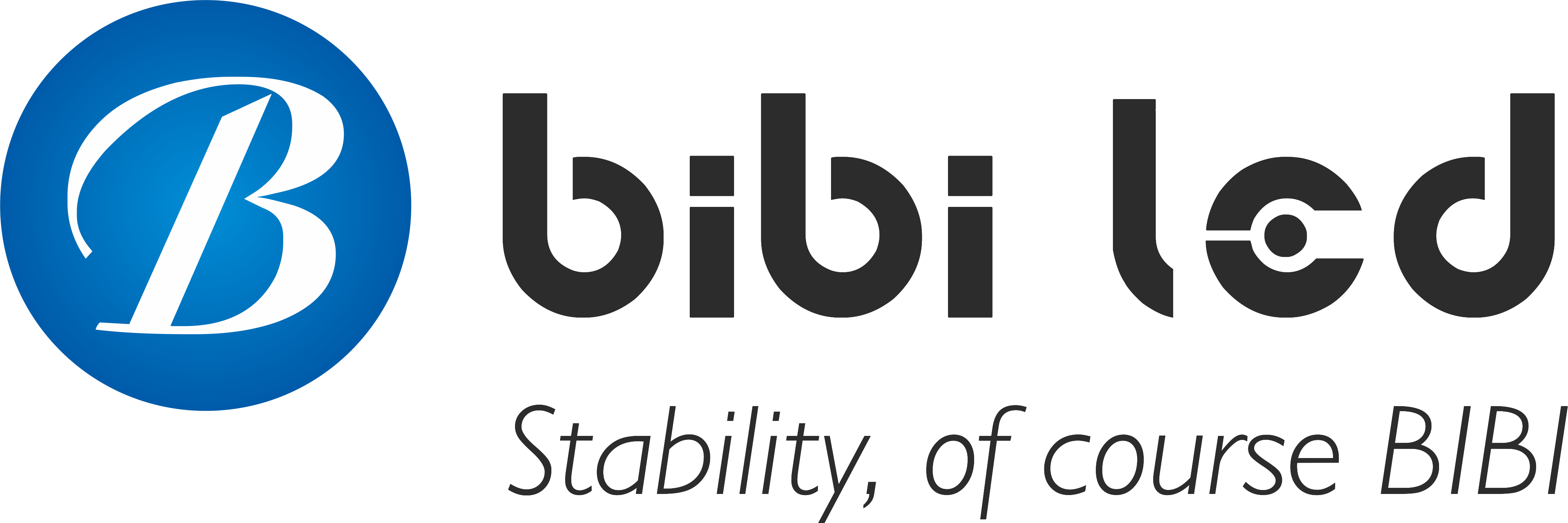Introducción
In the era of information explosion, how can lectures instantly capture the audience’s attention?
Traditional projectors can no longer meet the growing visual needs, and pantallas led are becoming the new favorite for many lectures with their excellent performance and experience. What is its charm?
Tabla de contenido
1. The "old problems" of traditional projection are becoming more and more obvious
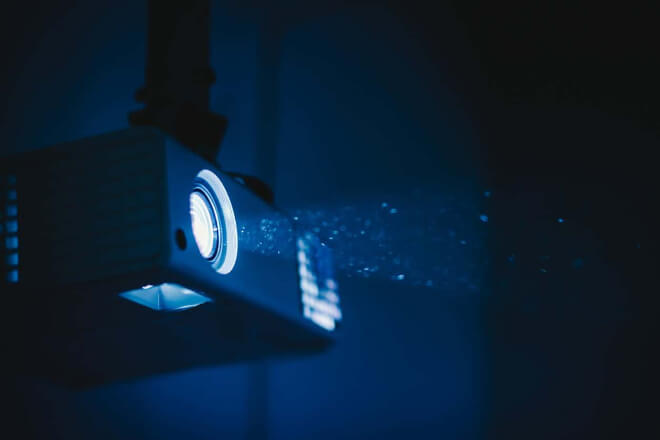
When using projectors in the past, you may have thought that “it’s okay”, but now the requirements are getting higher and higher, and the shortcomings of traditional projection have become particularly obvious.
The most common problem is fear of light. When the natural light is strong during the day, or when the lights in the room are turned on.
The projected image becomes gray and whitish, and the overall effect is greatly affected, especially in open spaces or large venues, where it is almost impossible to guarantee all-weather use.
Moreover, as long as there are many audiences and the distance is far, the audience sitting in the back row can basically only “see the outline”, and there is no visual experience at all.
In addition, traditional projections must be equipped with screens. The location of the screen is selected from the ceiling and the wall, and it is also troublesome to modify it.
Once it is installed, it is also a hassle to clean and repair it later, and the time cost and labor cost are not low.
The most annoying thing is the color performance. Even if you play high-definition content, the projected color always feels light, the contrast is not enough, and it looks “lacking in spirit”.
In this era, when even mobile phone screens pay attention to HDR, it is really difficult to be satisfied with the gray picture of the projection.
After all, traditional projection itself is designed for a “dark environment”, but the current usage environment has long changed, and users are no longer satisfied with “being able to see”, but pursue “seeing clearly, seeing truly, and seeing comfortably”.
2. What are the core advantages of LED screens?
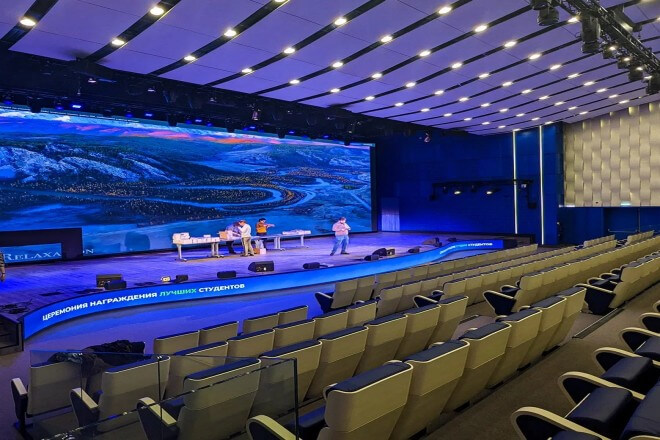
1) Alto brillo, still clearly visible under strong light
The LED screen has a high brightness. Even under the sun or when the indoor lighting is particularly strong, the picture is still clear and bright, and it will not be “diluted” by light like traditional projection.
This is particularly practical for daytime use or occasions with complex lighting. You don’t have to worry about not being able to see the content clearly, and the experience is greatly improved.
2). High color saturation, superior contrast, strong visual impact
The color of the LED screen is particularly bright, and the black and white contrast is also very good. The picture looks more layered and three-dimensional.
When playing videos or displaying pictures, the effect is much better than that of projectors.
The pictures are more vivid, can immediately catch the audience’s attention, and have a strong visual impact.
3). No need for screens and projectors, the structure is simpler and more flexible
LED screens emit light directly, and do not need to be equipped with screens and projectors like projection, which reduces a lot of bulky equipment.
It is also simpler and more flexible to install. It can be hung on the wall or spliced into various shapes.
It is suitable for all kinds of strange spaces. It has a large degree of freedom in placement and design, which is trouble-free and beautiful.
4). Long service life, low failure rate, and more convenient maintenance
LED screens have a long service life and can generally be used for several years. The life span is far longer than that of traditional projection bulbs. The probability of failure is low.
As long as you pay attention to wiping the screen and doing a simple inspection, it can run stably, saving a lot of trouble for repair and replacement. It is safer to use and saves a lot of money.
3. Viewing experience comparison: LED screens are clearly better
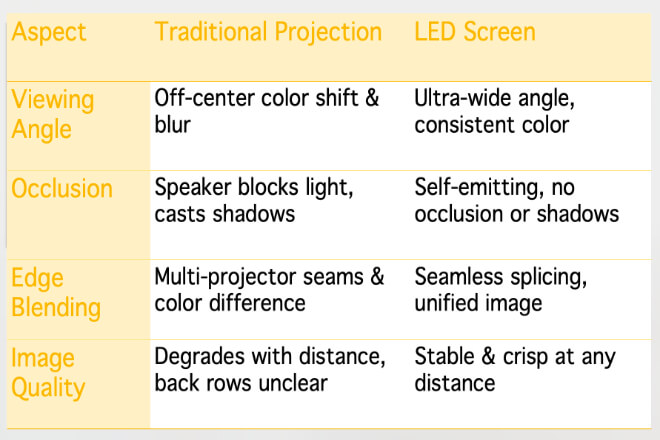
The viewing angle of traditional projection is actually quite limited. Once you are not sitting in the middle, the color will easily become strange, and the picture may become dark or blurry.
On the contrary, the ángulo de visión of the LED screen is very wide. Whether you are sitting in the front row or in the corner.
The picture you see is equally bright and clear, and everyone’s viewing experience is fairer and more comfortable.
Traditional projection relies on light to project images. Once the speaker stands on the light path.
The screen will be blocked and a large shadow will be cast, which will especially affect the audience’s viewing of the content.
The LED screen emits light directly, and the light does not need to be projected. No matter how the speaker walks.
The picture will not be blocked, and there will be no shadow. The atmosphere on the scene is more natural, and the interaction is smoother.
If you use traditional projection to assemble a large screen, you usually need to cooperate with multiple devices.
And there will inevitably be gaps or inconsistent colors, which is not very comfortable to watch.
The LED screen is almost seamless when spliced together, and the picture is completed in one go.
It can be spliced very large, and the effect is particularly shocking. Whether it is a meeting or a concert, the atmosphere on site can be instantly maximized.
The image quality of traditional projection often deteriorates significantly as the distance increases.
The audience sitting in the back row cannot see the details clearly, which greatly affects the experience.
LED screens are different. No matter how far you are from the screen, the picture remains clear and delicate.
It is especially suitable for large venues or open spaces, ensuring that everyone can see clearly and the information is more in place.
4. The professionalization trend of lecture sites promotes the popularization of LED screens
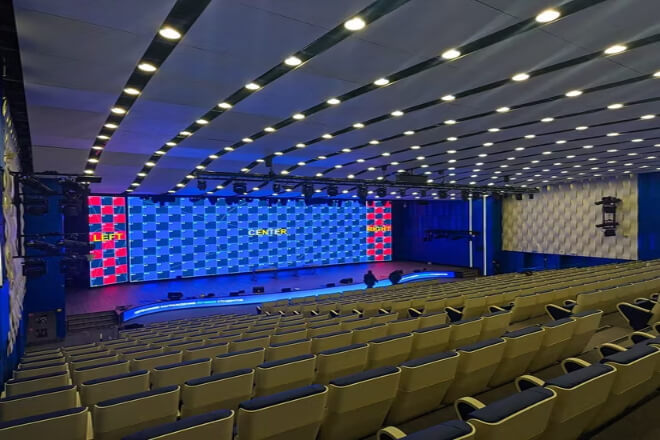
1). Educación and training institutions pay more attention to brand image upgrades
Today’s training institutions are not only “good at teaching” but also pay more attention to the overall professionalism and atmosphere.
Using large LED screens to display course content not only makes the picture clearer and more vivid, but also improves the grade of the entire classroom.
When students see such an environment, they are more likely to think that this institution is reliable and professional.
And are more willing to learn and recommend it for a long time. LED screens have gradually become the “standard configuration” for improving brand image.
2). Gobierno and corporate lectures have higher requirements for high-definition images
Government meetings or corporate training require rigor and efficiency. PPT, video, and real-time data must be displayed at any time, and clarity is critical.
Traditional projection often appears dim in bright environments and is difficult to meet such needs.
LED screens have high brightness and good color reproduction, and can ensure clear and stable images under various lighting conditions, completely solving such troubles.
3). Academic conference live broadcasts and remote connections are becoming more and more common
Now, live academic conference broadcasts have become the norm, and more and more remote experts are participating.
High-definition and stable video images have a great impact on the effect of the meeting.
LED screens not only have delicate image quality but also good stability, avoiding problems such as image freezes and color differences.
Helping everyone focus on the content itself, and improving the professionalism and interactive experience of the meeting.
4). Venue rental parties like “ready-to-use” LED solutions
Many venue rental companies choose LED screens, and the most important thing they value is that they are quick to install, easy to disassemble, and simple to maintain.
Whether it is a one-day lecture or a large-scale event for several consecutive days, LED screens can be deployed quickly, saving time and effort.
Compared with traditional projection, LED screens can better meet the changing needs of activities, and also save the venue a lot of trouble, and customer satisfaction will naturally increase.
5. Is the cost really higher than the projection? One-time investment, long-term return

When many people first see the price of LED screens, they will subconsciously say, “Wow, it’s so expensive!” Especially when compared with projectors, the initial budget of LED screens often seems much higher.
But the truth is that just looking at the price tag at the time of purchase does not tell whether a screen is worth it. The projection looks cheap.
But it hides a series of “hidden costs”, which may be a more expensive and laborious choice once calculated in detail.
1). How high is the “hidden cost” of projectors?
One of the biggest shortcomings of traditional projection equipment is the short life of the bulb.
Most projector bulbs can only be used for a few thousand hours, and they have to be replaced after the time is exceeded, and the price of the bulb itself is not cheap.
Especially in high-frequency use occasions such as conference rooms, exhibición halls, and classrooms, replacing bulbs has almost become a “daily operation”.
Not only that, the projection equipment itself has high maintenance requirements, and it needs to be cleaned regularly, adjusted, and debugged.
Once a color deviation or blurred picture occurs, professionals have to be invited to deal with it. The labor costs, time costs, and usage interference behind these maintenance are all considerable burdens.
2). The long-term value of LED screens is actually higher
In contrast, although the initial investment of LED screens is large, the value they show during their use cycle far exceeds expectations.
First of all, LED screens are extremely flexible. They are suitable not only for conference displays but also for performances, press conferences, teaching, live broadcasts, and other application scenarios.
They can even be spliced into screens of different sizes and proportions according to the needs of the venue.
With one screen, you can meet multiple purposes, greatly improving the utilization rate of the equipment. Secondly, the new generation of LED screens is performing better and better in terms of energy saving.
And power consumption is constantly decreasing. After long-term use, the electricity bill is lower than expected.
At the same time, the service life of LED screens is significantly longer, the operation is stable, and the maintenance is more worry-free.
The bad pixel rate is low, and the frequency of later replacement or repair is much lower than that of projection equipment.
3). One-time investment in exchange for a more professional and efficient experience
In the final analysis, the “cost” of LED screens is never just a numerical price tag.
It is more like a long-term investment, a choice made to obtain more stable operation, more professional visual effects, and a more efficient user experience.
A high-quality LED screen not only saves you from tossing back and forth on the equipment, but also improves the overall presentation quality and scene adaptation capabilities.
Especially for external display, corporate brand, event operation, and other occasions, the professional image and immersive experience it brings are no longer comparable to projection equipment.
6. What are the technical selections of LED screens suitable for lecture scenes?
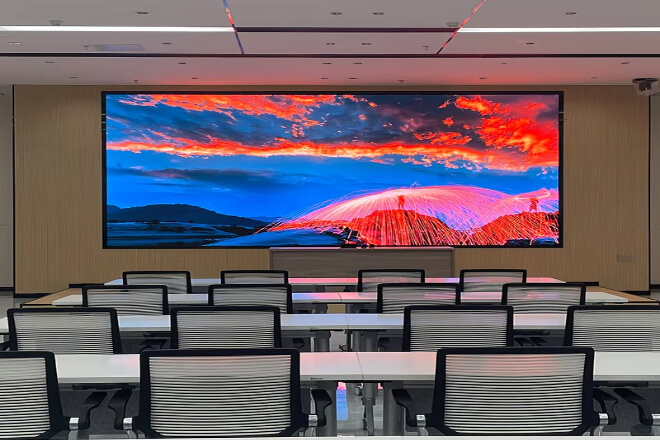
1). Pantalla LED de paso pequeño
This type of screen has a small dot pitch, generally between P1.2 and P2.5, and the picture is particularly delicate.
The audience at the lecture site is relatively close to the screen, and the picture is clear and grainy.
Text, PPT, charts, etc., can be clearly displayed, and information can be transmitted more accurately.
It is especially suitable for professional lectures with high requirements for image quality, and the effect is great.
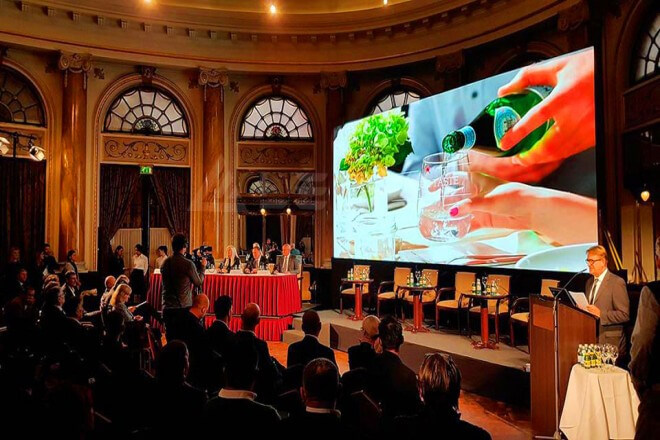
If your venue often holds lectures or various activities, it is very convenient to rent an LED screen. They are lightweight, easy to install and disassemble, and easy to change venues.
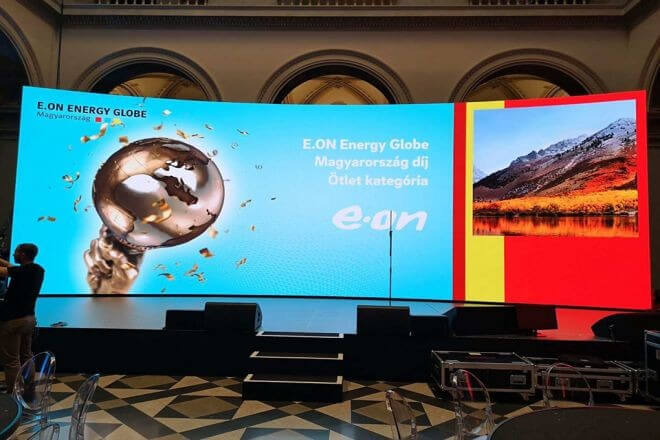
Flexible screens can be bent and folded, making them suitable for creating creative and stylish background walls or stage decorations.
The picture quality is still very good, and it can also create an immersive feeling, making the atmosphere more exciting.
If you want some special visual effects, flexible screens are definitely a weapon.
7. Conclusión
The application of LED screens in lectures not only enhances the visual experience but also highlights professionalism and quality.
If you also want to revitalize the lecture site, LED screens are undoubtedly a choice worth considering.
Por último, si quieres saber más sobre las pantallas LED, Por favor póngase en contacto con nosotros.
